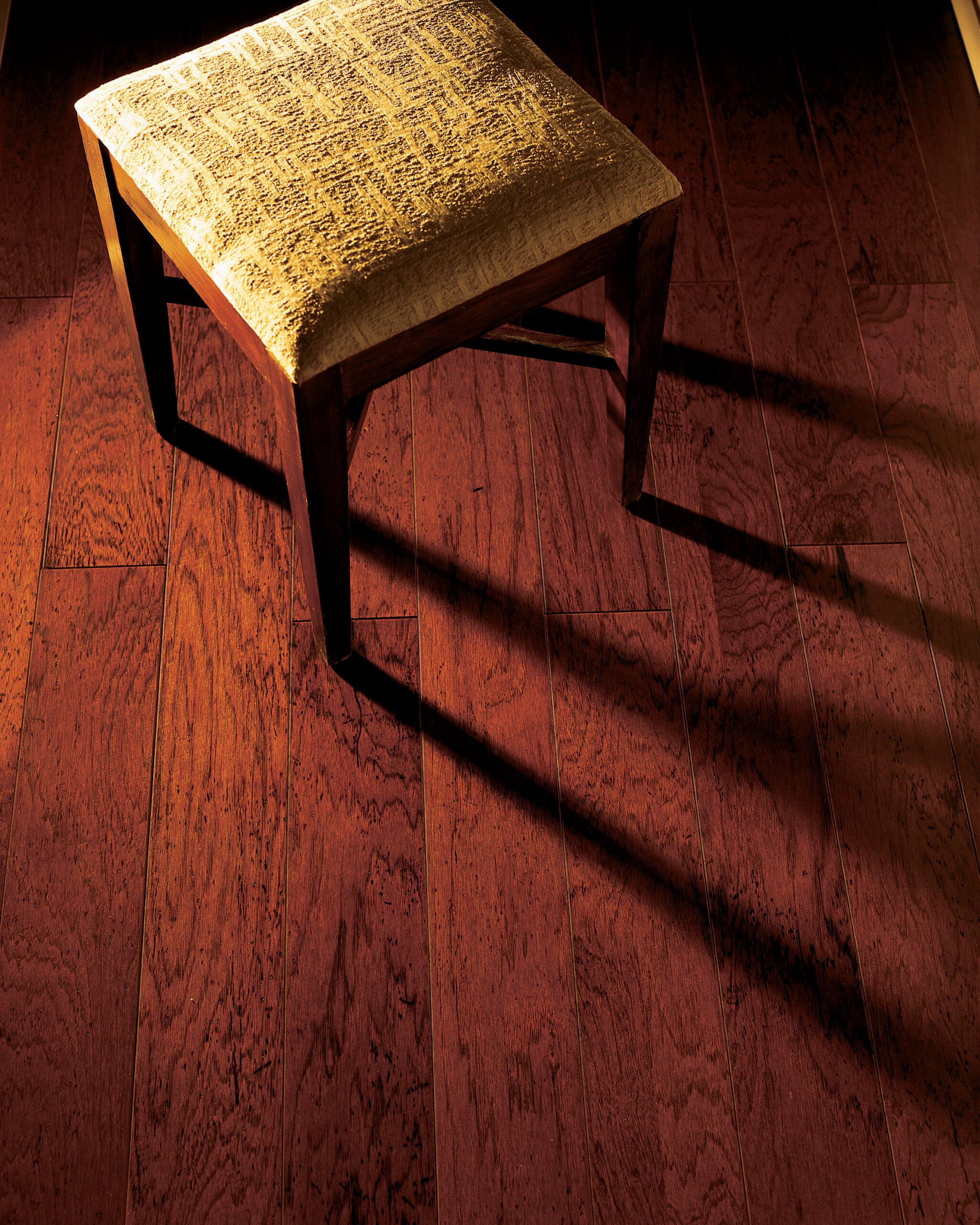Project details
Skill
Cost
Estimated Time
We may be compensated if you purchase through links on our website. Our team is committed to delivering honest, objective, and independent reviews on home products and services.
Installing a floating engineered wood floor is a great way to add warmth and beauty to your home without the complexity of traditional hardwood. Engineered wood flooring consists of a real wood veneer atop layers of plywood or high-density fiberboard, offering stability and resistance to moisture and temperature changes. In this guide, we walk you through the step-by-step process of installing a floating engineered wood floor.
Shown: Chesapeake Hickory Plank in Cherry Spice, from Mannington
Floating Hardwood Floor Overview
The image below shows the materials needed to install a floating floor and how to put it together.
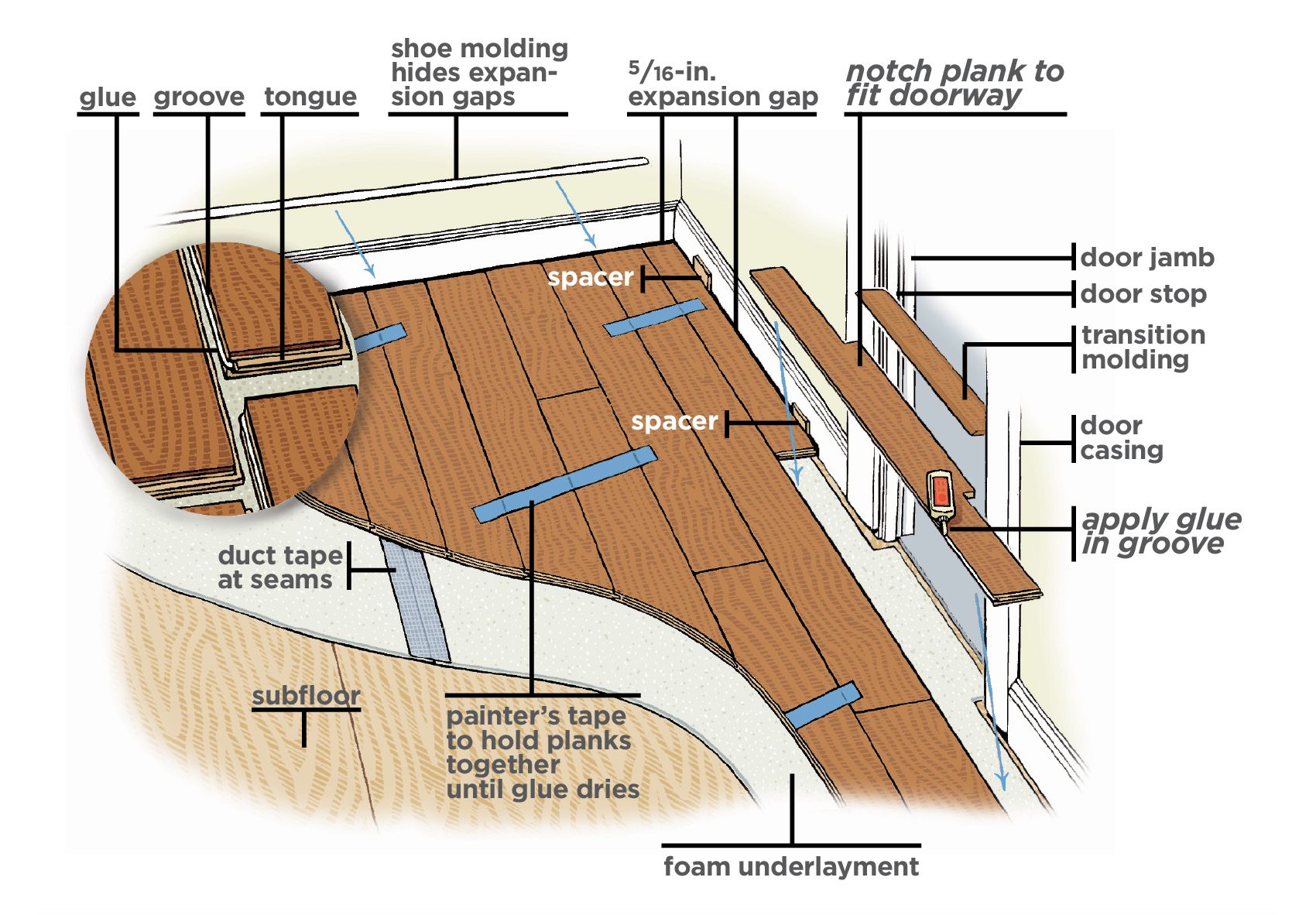
Tools and Materials Needed To Install a Floating Floor
Before beginning your installation, gather all necessary tools and materials.
Tools
- Chalk line
- Hammer
- Jigsaw or circular saw
- Miter saw
- Pencil
- Pull bar
- Safety glasses and knee pads
- Spacers
- Tape measure
- Tapping block
- Utility knife
 Flush-cut dovetail saw
Flush-cut dovetail saw Miter saw
Miter saw Circular saw
Circular saw Hammer
Hammer Flat pry bar
Flat pry bar Coping saw
Coping saw Nailset
Nailset
Materials
In addition to the flooring itself, you’ll need these materials:
- Baseboards or quarter-round molding
- Duct tape (for sealing underlayment seams)
- Transition strips
- Underlayment (foam or cork)
- Vapor barrier (if installed over concrete)
- Wood glue (for some click-lock systems)
Make sure you get high-quality underlayment and the correct vapor barriers. Poor-quality underlayment or incorrect vapor barriers can compromise the integrity of your installation, leading to potential damage down the line.
Preparing the Room for a New Floor
Proper preparation is key to a successful floating floor installation. This involves removing existing flooring and checking that the subfloor is clean and level.
Removing Existing Flooring
If you’re replacing old flooring, remove it carefully to avoid damaging the subfloor. For carpet, cut it into manageable strips and roll them up for disposal. For vinyl or laminate, use a pry bar to lift the edges and remove the planks. If you’re installing over existing tile, make sure it’s securely bonded to the subfloor and fill grout lines with a leveling compound.
Cleaning and Leveling the Subfloor
Vacuum the subfloor thoroughly to remove all debris. Check for any high or low spots using a long straightedge. For wood subfloors, sand down high spots and fill low areas with a floor-leveling compound. For concrete, use a self-leveling compound to address any unevenness. The subfloor should be level within 3/16 inch over a 10-foot span.
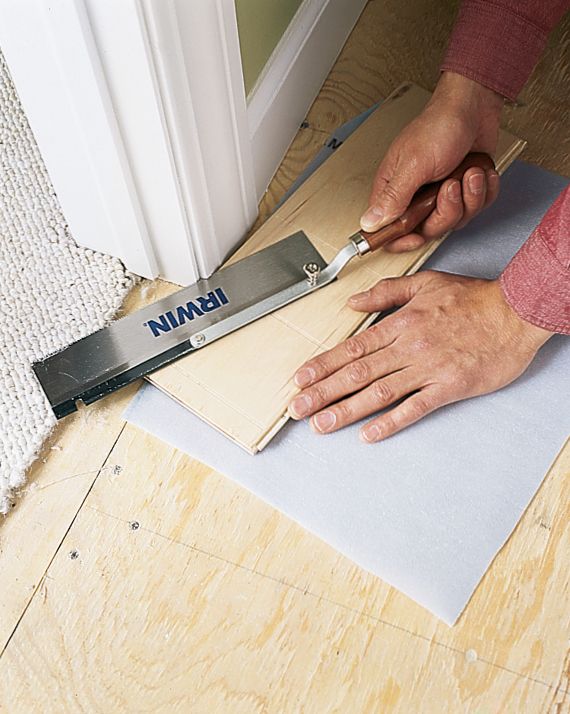
Acclimating the Engineered Wood
Acclimation is often overlooked but improves the longevity and performance of your engineered wood floor.
Importance of Acclimation
Acclimation allows the engineered wood to adjust to the temperature and humidity conditions of the room where it will be installed. This process helps prevent issues such as gaps, buckling, or cupping after installation. Most manufacturers recommend acclimating the flooring for at least 48 hours before installation. This step helps the wood reach a stable moisture content equivalent to that of the installation environment.
Proper Acclimation Techniques
To properly acclimate your flooring, follow these steps:
- Stack the boxes of flooring in the room where they will be installed.
- Cross-stack the boxes to allow air circulation.
- Maintain the room at normal living conditions (between 60-80 degrees and 35-55% relative humidity).
- Do not open the boxes until you’re ready to begin installation.
Installing the Underlayment for a Floating Floor
The underlayment provides a layer between the subfloor and your newly engineered wood flooring. It helps with sound dampening and moisture protection and can give a slight cushioning effect.
Choosing the Right Underlayment
Select an underlayment that’s compatible with your flooring and subfloor type. For concrete subfloors, choose an underlayment with a built-in vapor barrier or install a separate 6-mil polyethylene sheet first. For wood subfloors, a basic foam or cork underlayment is usually sufficient. The choice of underlayment can affect the overall feel and performance of your floor, so choose carefully based on your specific needs.
Laying and Sealing the Underlayment
Follow these steps to install the underlayment:
- Unroll the underlayment perpendicular to the direction you plan to lay the flooring.
- Butt the edges of the underlayment together without overlapping.
- Trim the underlayment to fit the room, leaving a small wall gap.
- Seal the seams with duct tape to create a continuous layer.
- Vacuum the room.
- Unroll the foam underlayment. Cover the entire room with a single layer, trimming it to fit with a utility knife and butting the seams together.
- Seal the seams with duct tape.
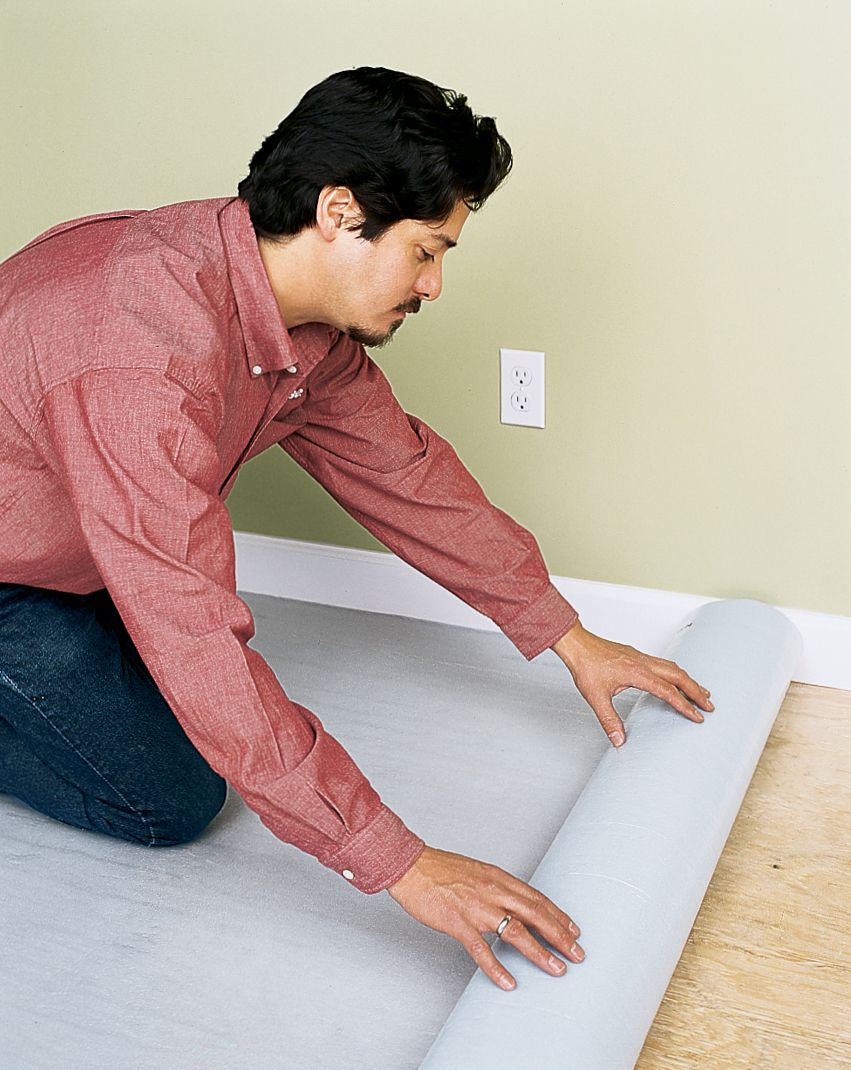
Starting the Installation
With the room prepared and materials acclimated, you can begin installing your floating engineered wood floor.
Measuring and Planning the Layout
Measure the width of the room and divide it by the width of your flooring planks to determine how many rows you’ll need. If the last row is less than 2 inches wide, you’ll need to cut the first row narrower to create a wider last row. Decide which direction to lay the flooring. Running it parallel to the longest wall usually looks best. A well-planned layout provides a visually appealing result and minimizes waste.
Installing the First Row
Start in a corner of the room, placing spacers against the walls to maintain a 5/16-inch expansion gap. Lay the first plank with the groove side facing the wall. For click-lock systems, angle the tongue of the second plank into the groove of the first and press down to lock them together. For glue systems, apply a thin bead of wood glue to the groove before joining the planks.
Lay down the first plank with its grooved end in the corner against a spacer block. Spacers should also be placed along the starting wall. As you set the flooring, always keep the tongues facing out and cut ends against a wall.
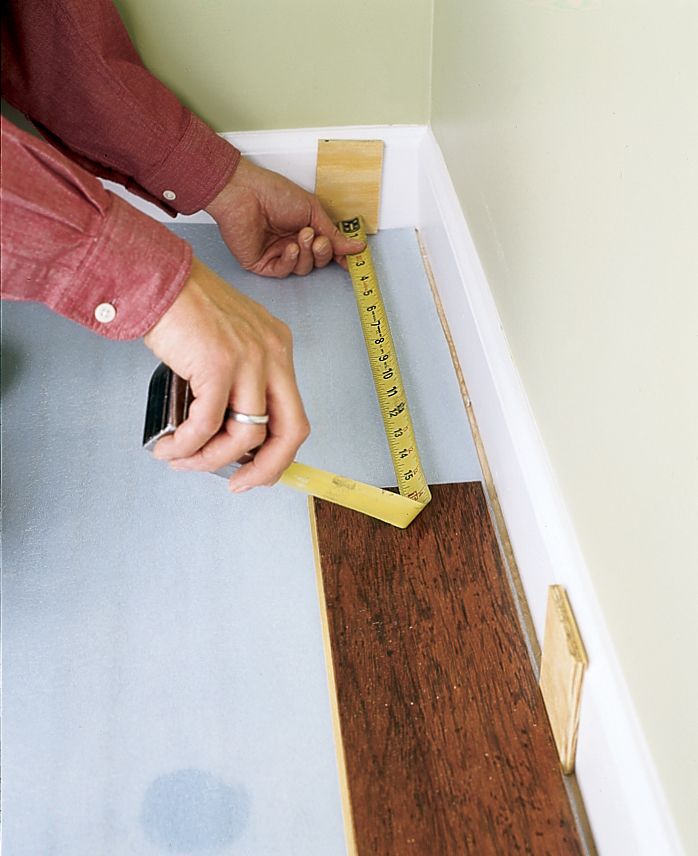
Staggering the Planks
Stagger the end joints of adjacent rows by at least 6 inches to create a strong and visually appealing floor. This not only improves the look of the floor but also increases its structural integrity. Start each course with the piece of flooring left over from the previous cut (cut end to the wall), as long as it’s more than 8 inches long. This will keep the joints staggered.
Maintaining this stagger ensures the floor’s seams are evenly distributed, preventing weak points and enhancing the final appearance.
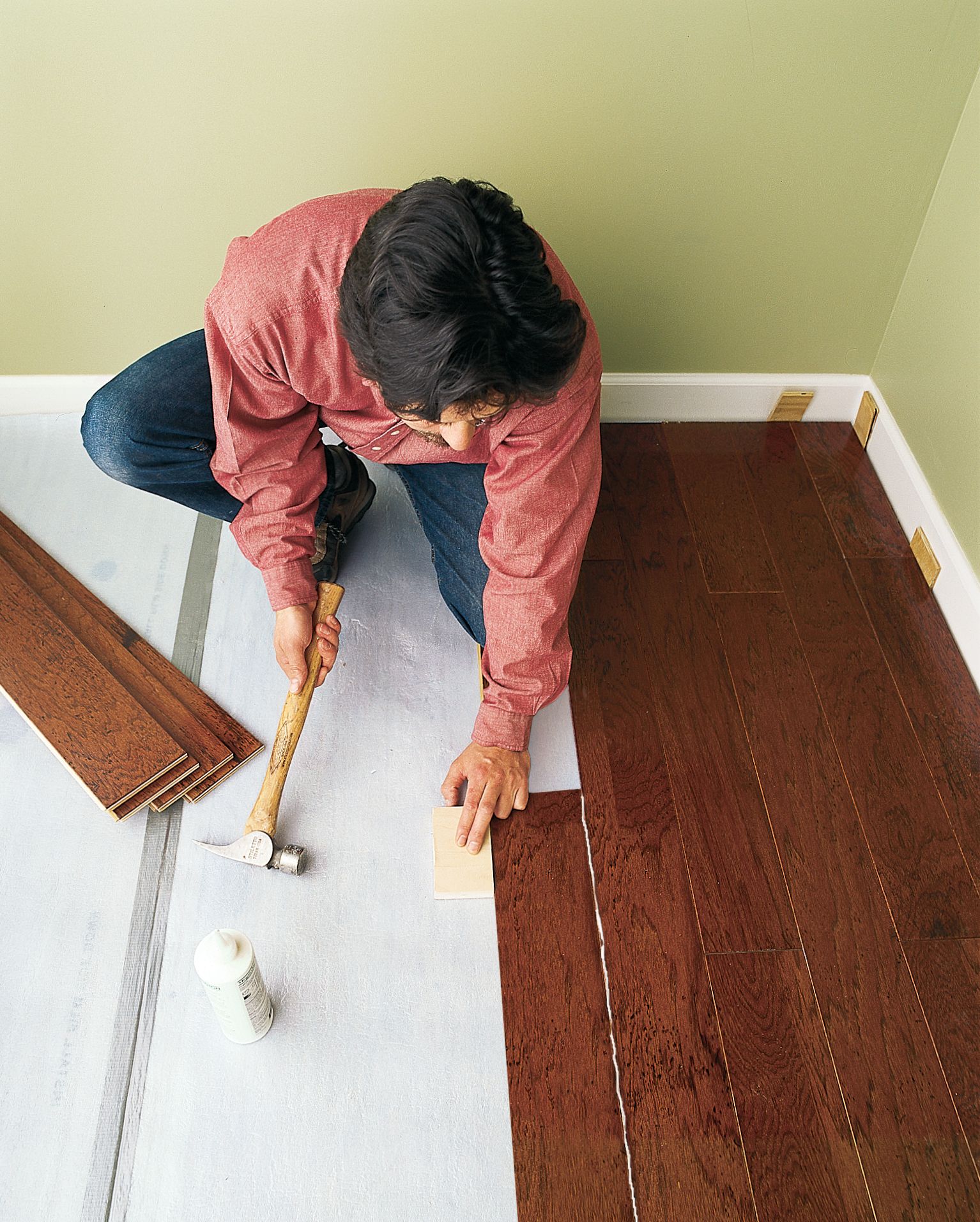
Cutting and Fitting Planks
As you progress, you’ll need to cut planks to fit at the end of rows or around obstacles. For straight cuts, use a miter saw or circular saw. For more intricate cuts around door frames or pipes, use a jigsaw. Measure twice to check for accuracy before cutting.
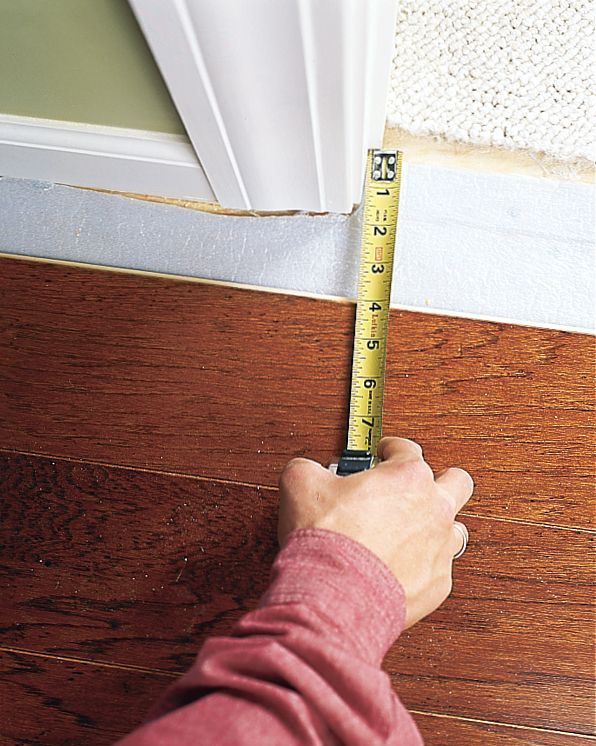
Dealing with Obstacles and Transitions
Every room has its unique challenges, from door frames to transitions between different flooring types. Here’s how to handle various obstacles:
Working Around Door Frames
You may need to undercut the casing to fit planks under door frames. Use a flush-cut dovetail saw to trim the bottom of the casing at all doorways so the flooring will slide underneath. Gauge the height of the cut by laying down a piece of foam underlayment and flooring upside down so the saw won’t scratch the finish.
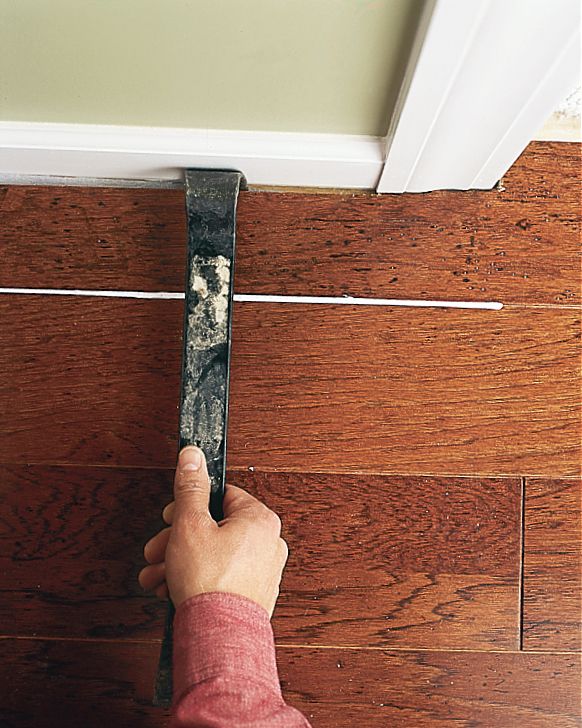
Installing Transition Strips
You’ll need to install transition strips where your new engineered wood floor meets another type of flooring. Transition strips improve the visual continuity between different flooring types and support the structural dynamics of the floating floor.
To install, set the transition on the subfloor. Overlap the flooring on either side, but leave a 5/16-inch gap against the floating floor. Drill three pilot holes along its center to keep the transition molding from splitting, then fasten it to the subfloor with 4d finish nails.
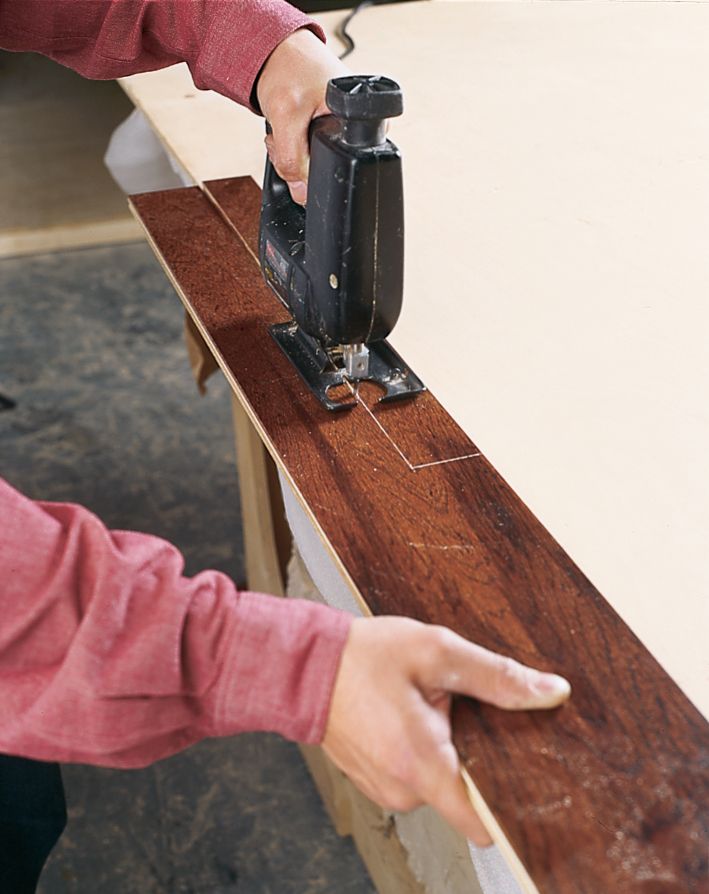
Adding Baseboards and Trim
Once the flooring is installed, remove the spacers and install baseboards or quarter-round molding to cover the expansion gap. Set the molding in place tightly against the floor. Fasten it to the baseboard, not the flooring, with 4d finish nails. This allows the floor to expand and contract freely beneath the trim.
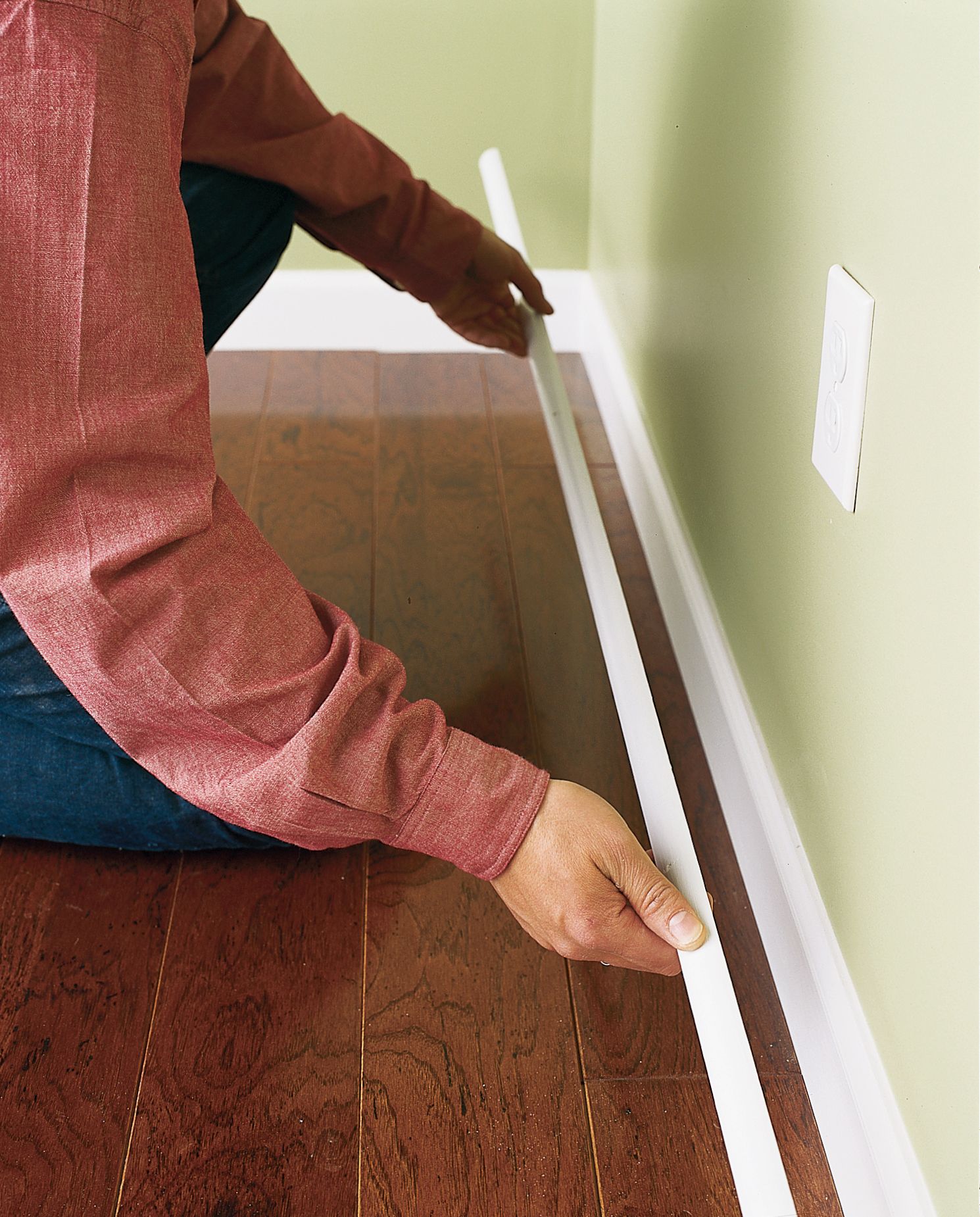
Cleaning and Maintaining the New Floor
After installation, clean the floor with a product recommended by the manufacturer. Here’s how to maintain your engineered wood floor:
- Clean up spills immediately to avoid water damage.
- Place mats at entryways to catch dirt and moisture.
- Sweep or vacuum regularly to remove dirt and debris.
- Use felt pads under furniture legs to prevent scratches.
Troubleshooting Common Issues With Floating Floors
Even with careful installation, you may encounter some issues with your new floating floor. Here are solutions to common problems:
Addressing Gaps Between Planks
Addressing gaps between planks maintains the structural integrity and visual appeal of your floor. Gaps could be due to improper installation or extreme humidity changes. For click-lock systems, check that each plank is fully engaged. For glued joints, apply pressure to close gaps before the glue sets. In severe cases, you may need to replace affected planks.
Fixing Squeaky Floors
Squeaks in a floating floor are often caused by uneven subfloors or debris trapped under the flooring. To fix this, locate the source of the squeak and inject a dry lubricant, such as powdered graphite, into the joint. For persistent squeaks, you may need to remove the affected planks and address any subfloor issues. Fixing squeaky floors creates a silent, comfortable walking experience and improves the overall durability of the installation.
